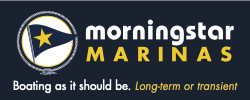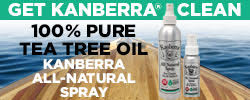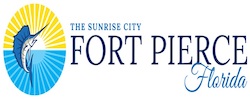Keys White Reef Lights Being Replaced
As reported by Adam Linhardt in KeysNews.com, Alligator Reef Light (Islamorada), American Shoal Reef Light (Big Pine Key), Carysfort Reef Light (Key Largo), Sand Key Reef Light (Key West) and Sombrero Key Reef Light (Marathon)are scheduled to be replaced by brighter, more powerful LED lights.
New reef lights being installed
BY ADAM LINHARDT Citizen Staff
alinhardt@keysnews.com
Saturday, February 7, 2015
Florida Keys maritime historians can breathe a sigh of relief as the Coast Guard has no plans to remove the historic reef lights throughout the island chain.
But they are scheduled to go dark this year.
The Coast Guard Sector Key West Aids to Navigation Team (ANT) is in the process of installing new, more powerful LED lights on single steel pilings near every historic reef light in the Keys. The cost to taxpayers will be about $100,000.
That cost should be negligible in the coming years as the ANT crews have been spending about $2 million the last few years repairing and maintaining the existing lights at Alligator Reef Light (Islamorada), American Shoal Reef Light (Big Pine Key), Carysfort Reef Light (Key Largo), Sand Key Reef Light (Key West) and Sombrero Key Reef Light (Marathon).
The problem has been the ANT crews have had to contract out the work needed to be done to the old historic lights to keep them up to Occupational Safety and Health Administration (OSHA) standards at a high cost. The new, modern lights will be much more efficient in terms not only cost, but also operationally, said Coast Guard ANT Chief Jeff Hunter.
The old historic light structures are not going to be taken down, but they will go dark when the new lights are installed.
The new lights are going up very close to the old structures, Hunter said. They will leave a smaller environmental footprint and were approved by National Oceanic and Atmospheric Administration (NOAA) as per the Florida Keys National Marine Sanctuary.
“The old lights project about nine miles out to sea and, in our opinion, we just don’t need them to project that far anymore,” Hunter said. “Things like modern GPS and navigational tools make that possible. The new lights will project about seven to eight miles out, just past the marine sanctuary.”
Ships larger than 164 feet (or 50 meters) cannot legally transit sanctuary waters outside of the main shipping channel, and the reef (warning) lights are intended for those vessels more than smaller recreational boats, Hunter said.
The white reef lights are not to be confused with green and red navigational lights more commonly seen throughout the island chain.
“That’s really what our reef lights are for — to keep the big ships out there and let them know there’s a hazardous reef nearby,” Hunter said. “As long as the light is projected past the boundary, those ships know they need to avoid the area.”
The ANT crews have put up new lights at Carysfort and Sand Key reef lights. The rest are scheduled to be completed by the end of this year, Hunter said.
“Obviously, weather is always a concern when working out on the water,” Hunter said.
Hunter stressed that the old reef lights — some are 100 years old or more and as much as 80 feet tall — aren’t going anywhere.
“Don’t think we’re abandoning them or that they’re going to fall into the reef anytime soon,” Hunter said. “They’re just not up to our structural standards when we have to work on them. I would add that the historical lenses were removed on the old lights years ago and what’s up there now is just a traditional beacon and not the historic light.”
Meanwhile, a system of offshore weather stations previously attached to the historic reef lights that once provided information to mariners, anglers and scientists has been defunded, said Florida Keys National Marine Sanctuary Superintendent Sean Morton.
The program was called Sustained Ecological Research Related to the Management of the Florida Keys Seascape, or SEAKEYS. The station once provided real-time weather, tide and current data to the public free of charge via the Internet, but those days appear over.
“Funding for that program came through a grant and (it) ran out,” Morton said.
Whether the program will come back remains dim.
“I doubt it,” Morton said. “We tried and basically the message we got was that it most likely will not be funded. Attempts were made to a different part of NOAA in Miami collecting some information, but not like we had at each of the lights.”
Hunter added the Coast Guard has been having problems with people climbing the old reef lights, which is a federal trespassing offense.
“The Alligator Reef Light (Islamorada) is the worst,” Hunter said.
Residents need to know that they will be arrested and forced to appear in federal court if seen climbing the lights, Hunter said.
alinhardt@keysnews.com



















 Study Examines Impacts of Inland Waterway Investment
Study Examines Impacts of Inland Waterway Investment







Comments from Cruisers (1)
On hot summer nights I would sleep in the cockpit at Carysfort. Last summer I spent a night there and had a hard time sleeping with that bright flashing light down close to the water. Night time was more pleasant with the old light up high.